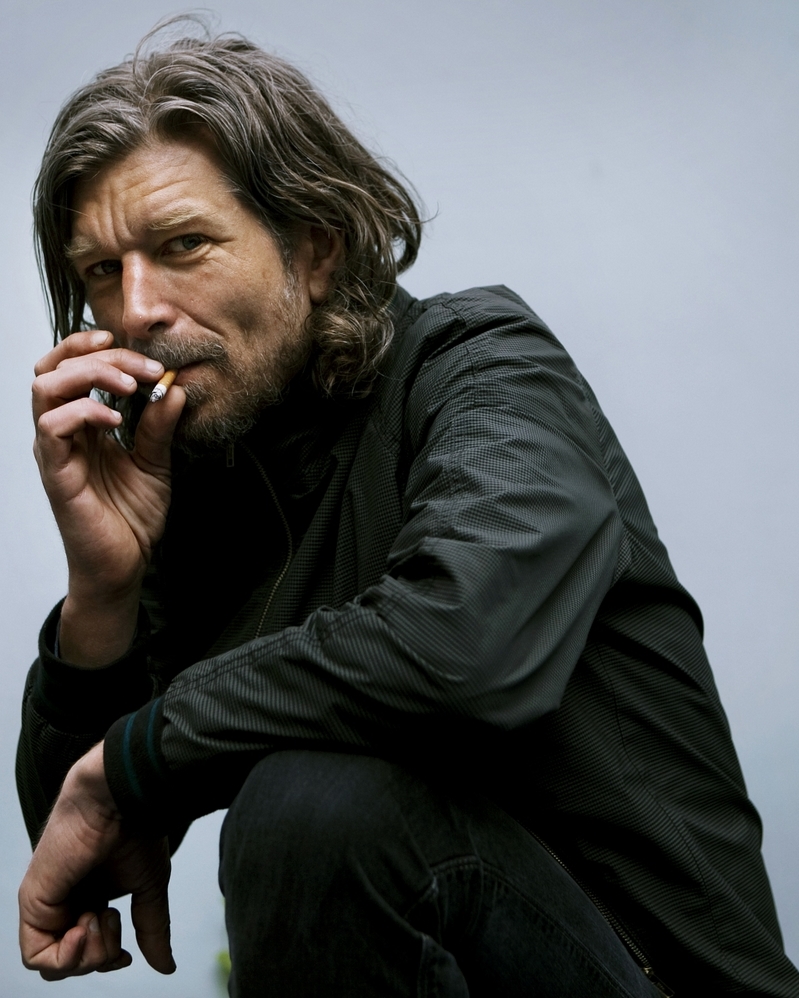
Karl Ove Knausgaard
Karl Ove Knausgaard has become an infamous contemporary writer by his beautiful prose and raw portrayal of human experience. His massive soon-to-be six volume, autobiographical series dubbed My Struggle has made an irrefutable mark by vividly cataloguing Knausgaard’s ordinary Swedish life and the challenges that come along with it. Essentially, My Struggle is the 3,600-page memoir to end all memoirs. While readers are still awaiting the release of My Struggle’s sixth volume, Knausgaard has begun a new project. Autumn begins another deeply personal adventure for the Norwegian writer as he begins to explain the world to one who has yet to enter it, Karl Ove’s unborn daughter.
I want to show you our world as it is now: the door, the floor, the water tap and the sink, the garden chair close to the wall beneath the kitchen window, the sun, the water, the trees. You will come to see it in your own way, you will experience things for yourself and live a life of your own, so of course it is primarily for my own sake that I am doing this: showing you the world little one, makes my life worth living.
 Now, at first glance, you may think that this is a heavy book and by “heavy,” I mean emotionally heavy. I won’t lie to you and say that isn’t in there, but amidst the rawness of Karl Ove’s descriptions there lies a certain beauty that is just as much frightening as it is entrancing. As Knausgaard begins to describe the world to his daughter, he engages in deep reflections on everything from cars to war, Flaubert to twilight, and bottles to beekeeping. What follows is a refreshing view of ordinary life as it is explained to one who has not yet experienced anything outside of a mother’s womb. In essays like “Lightning,” the author delves into the odd relationship between horror and beauty as he and his family watch a gigantic bolt of lightning hit the street outside their home. In “Flaubert,” the author reflects upon his favorite novel and the distinction between literary enjoyment and study. The heart of each meditation is the urge of the author to find what exactly it is that makes life worth living. As Knausgaard takes on each new topic, describing it as though it has never been seen, the reader is brought into the depths of the real and at times the philosophical. “Labia,” as an example, explores the complexity of male sexuality and the shame that often follows closely behind it. “Vomit” takes opportunity to explore the plethora of bodily fluids that we are all familiar with, but puts inquiry into the generally hatred that human beings have for that which is “usually yellowish” and still contains “chunks of pizza” and other remnants of the “undigested.”
Now, at first glance, you may think that this is a heavy book and by “heavy,” I mean emotionally heavy. I won’t lie to you and say that isn’t in there, but amidst the rawness of Karl Ove’s descriptions there lies a certain beauty that is just as much frightening as it is entrancing. As Knausgaard begins to describe the world to his daughter, he engages in deep reflections on everything from cars to war, Flaubert to twilight, and bottles to beekeeping. What follows is a refreshing view of ordinary life as it is explained to one who has not yet experienced anything outside of a mother’s womb. In essays like “Lightning,” the author delves into the odd relationship between horror and beauty as he and his family watch a gigantic bolt of lightning hit the street outside their home. In “Flaubert,” the author reflects upon his favorite novel and the distinction between literary enjoyment and study. The heart of each meditation is the urge of the author to find what exactly it is that makes life worth living. As Knausgaard takes on each new topic, describing it as though it has never been seen, the reader is brought into the depths of the real and at times the philosophical. “Labia,” as an example, explores the complexity of male sexuality and the shame that often follows closely behind it. “Vomit” takes opportunity to explore the plethora of bodily fluids that we are all familiar with, but puts inquiry into the generally hatred that human beings have for that which is “usually yellowish” and still contains “chunks of pizza” and other remnants of the “undigested.”
At the heart of Knausgaard’s project is the desire to get back at the reality of life and to leave behind the routine prejudices that we allow to filter our view of the world. Through explaining the world to his daughter, the author as well as the reader is confronted with the raw beauty and the absurdity of life. Each time I finished a sitting with these essays, I somehow walked away feeling more real. Like my perception of the world had been sharpened and I had the tools necessary to appreciate the nuts and bolts that make up the world around us.
by Taylor Langele


Comments are closed.